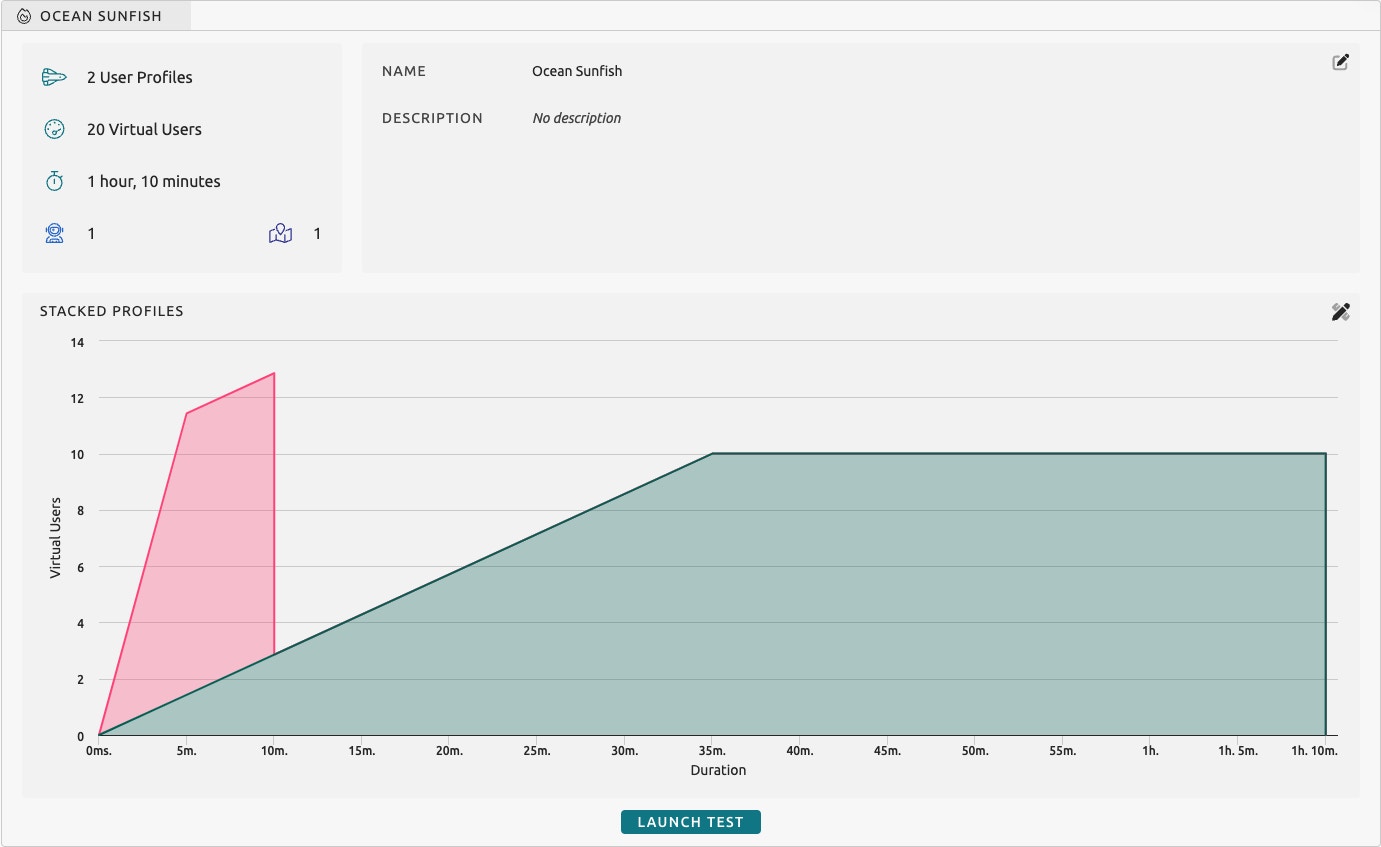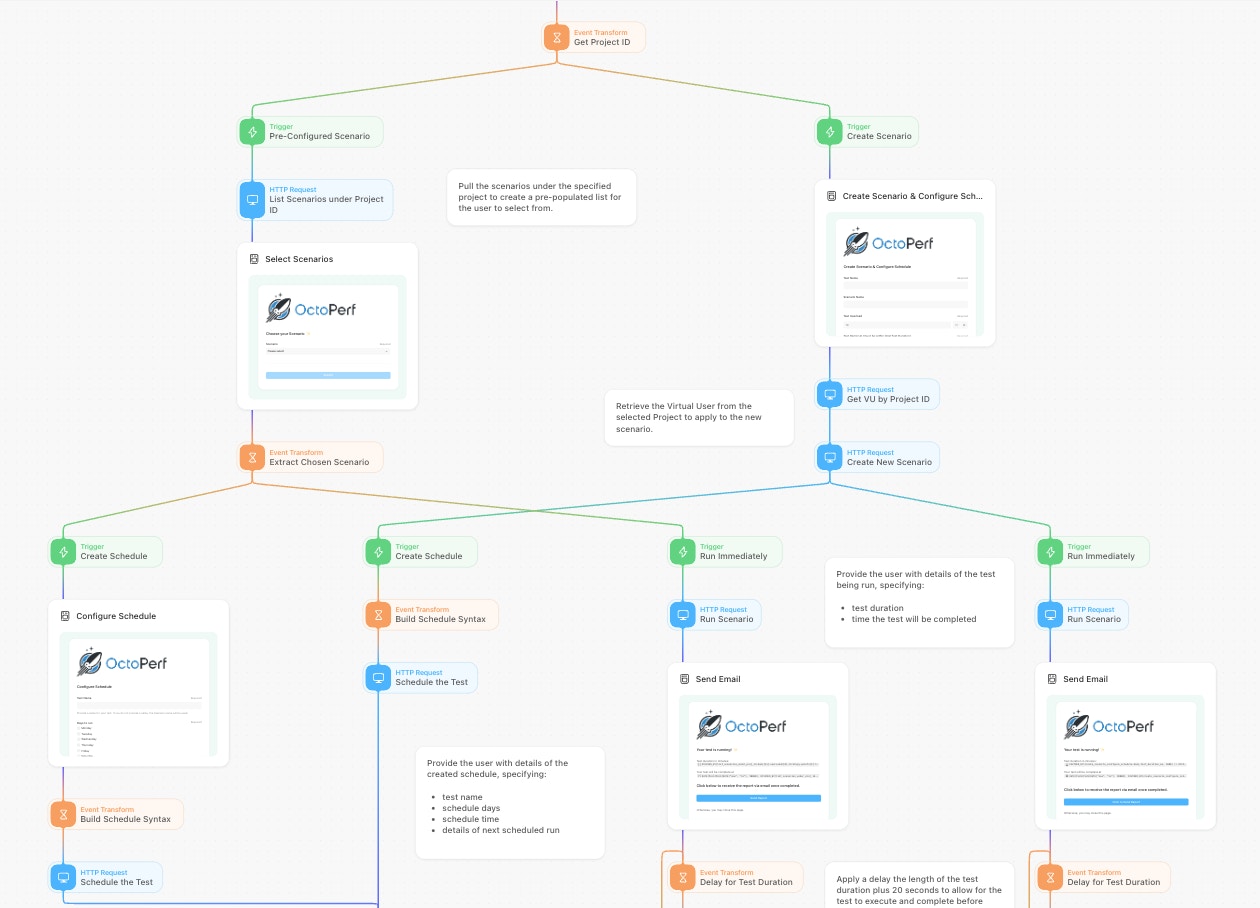Tines has the superpower of protecting businesses in the security space through mission-critical automation workflows, but that does not mean our capabilities are restricted to that. In this blog, we’ll delve into how Tines can be implemented in other areas of the business to help your company streamline manual and time-consuming tasks.
OctoPerf is a cloud-based performance testing tool, offering an on-premise version where needed, that helps developers and testers optimize the performance of their websites. It allows users to simulate thousands of virtual users, generate realistic traffic, and monitor the system's response to the load. The intuitive interface simplifies the creation, execution, and analysis of load tests and produces detailed output reports for each test.
Tines’s versatility comes from its ability to integrate with any tool that offers an API. By combining Tines with the OctoPerf platform, Tines provides a streamlined way of automating the creation, scheduling, and execution of test scenarios and delivering the final analysis reports right to your inbox. In this blog, we will cover a story that does exactly that.
To begin, an OctoPerf account is required, which you can create here. With your account, you will have access to your own workspace where you can add your team members and collectively create user profiles, custom scenarios, and configure the scheduler. A visual of what a configured scenario looks like can be seen below.

The virtual user count, test duration, ramp-up time, and peak load are all configurable to create a test that is tailored precisely for your goals.
All HTTP Requests to OctoPerf require an API Key credential to be entered as an ‘Authorization’ header. This can be created from your OctoPerf account, under the profile menu option ‘API Key’.

OctoPerf supports multiple methods for creating or importing an application to be tested, referred to as a Virtual User (VU). These include:
Entering a website URL or REST API URL
Importing a Postman collection
Importing a recorded Chrome HAR file
Importing a JMeter JMX file
The Virtual User associated with the project selected by the user is then referenced when creating the scenario.

In this story, we are using Tines’s pages feature to interact with users through a customizable and user-friendly interface. The page link can be shared amongst your team and gives them control over the configuration of the scenarios they want to create, schedule, and where to send the final report. By using HTTP Requests to OctoPerf throughout the story, it ensures that every dropdown field the user interacts with displays pre-populated, dynamic data that takes into account the previous inputs and the user account.
After the workspace and project are selected, there are two key pathways the user can select: using a pre-configured scenario within the workspace or creating a brand new scenario.
Pre-configured scenario
Using the API key, all existing scenarios will be shown in a dropdown. Once a scenario is selected, the user can choose to run the scenario immediately and enter an email address to send the analysis report to. Another option is to create a new weekly schedule by indicating the days and time the scenario should run. This will be automatically enabled when created so the user will not have to perform any further actions.
Create a new scenario
Choosing this will bring the user to a different page to that of the first option, which will ask for a number of inputs such as test name, scenario name, user-load, ramp-up time, peak load time, and test duration. The same scheduling options will be presented to either run the new scenario immediately or to create a schedule.
When any scenario is run immediately, the analysis report that is created will be sent to the email address submitted, along with a link to the OctoPerf results page for a more detailed review. The analysis report provides detailed information on the performance of the website, including response times, hit counts, and error counts. Key areas can be identified and improved to optimize the performance of your website ensuring the best possible user experience.
Find the story below to try for yourself:
Loading story...
Beyond the ability to integrate with any tool offering an API, Tines provides support to teams whose daily tasks exceed the amount of time they have to complete them. Automating repetitive, time-consuming tasks will not only reduce the manual workload but it allows teams to focus on more critical initiatives.